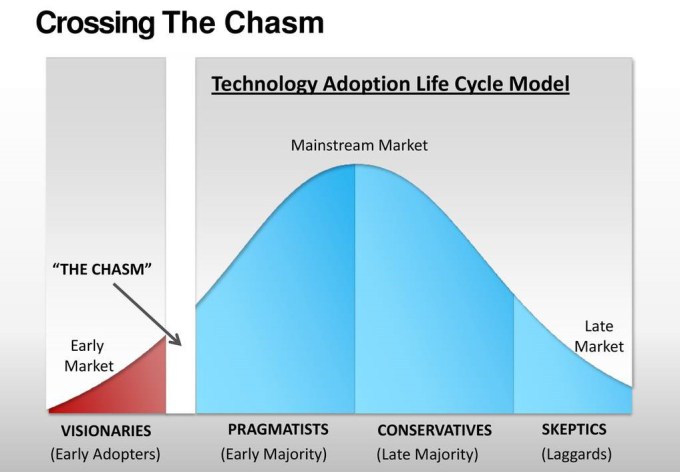ORA is developing data systems that will give our customers the ability to store, navigate, and visualize their data. The first product we designed is a 4-component, 3D module called the protostar system, which is navigable through time and space, and of which the HALO is one component.
We released and patented the HALO as a way of getting to market faster, and learning from our early adopters about the way users perceive and interact with this new kind of dimensional data viz.
With the imminent release of our (beta) HALO SDK, it marks our move from visionary Innovators (as introduced by Everett Rogers' diffusion of innovation model), to Early Adopters:
By moving past the visionaries who first engaged us and gave us an outlet and feedback loop to iterate the product, we are now pushing into a SaaS pricing and business model that will involve incrementally larger and more risk-averse customers.
One of the ways this is described in is the 3 Chasm Model, which is a core plank in the business philosophy of Cartezia's Triple Chasm Model.
The 3 chasms defined by Cartezia's Triple Chasm Model cover the transition from concept to demonstrator, demonstrator to early product, and early products to volume products. In our experience, most market failures do not occur because of problems with technology, management or funding, but arise from the failure of companies to recognise where they are in this development cycle and understanding the different skills and resources required to cross each chasm.
Crossing Chasm II is about turning the proven concept into a product or service with a viable business model. Historically, this was an area that Venture Capital was supposed to concentrate on, consistent with its mantra of high risk-high return...




